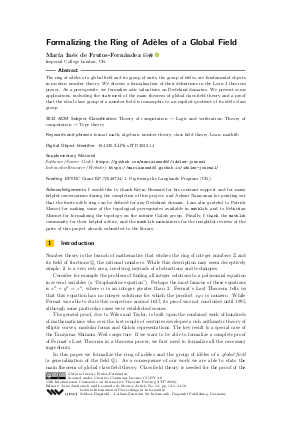LIPIcs.ITP.2022.14.pdf
- Filesize: 0.79 MB
- 18 pages

 Creative Commons Attribution 4.0 International license
Creative Commons Attribution 4.0 International license




Feedback for Dagstuhl Publishing